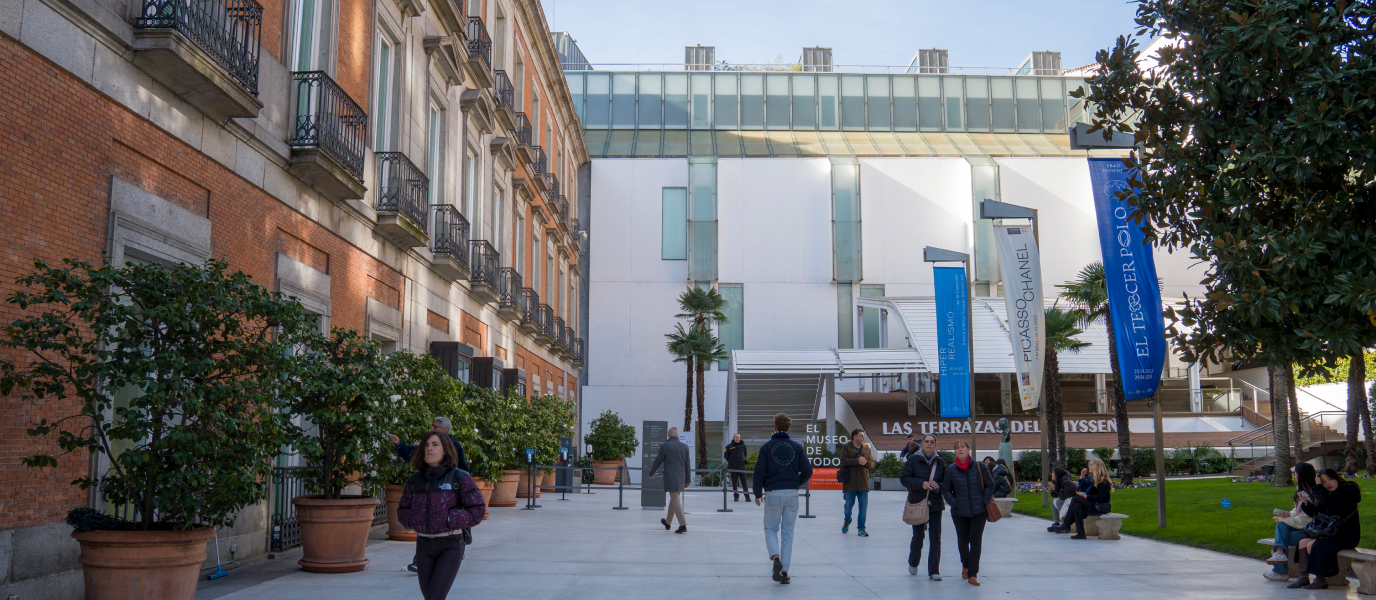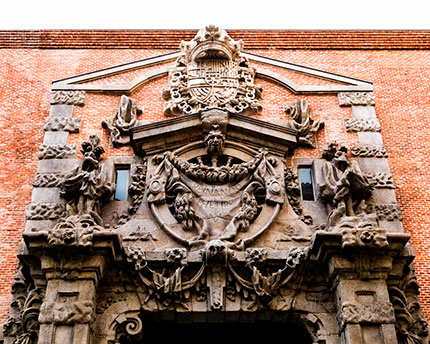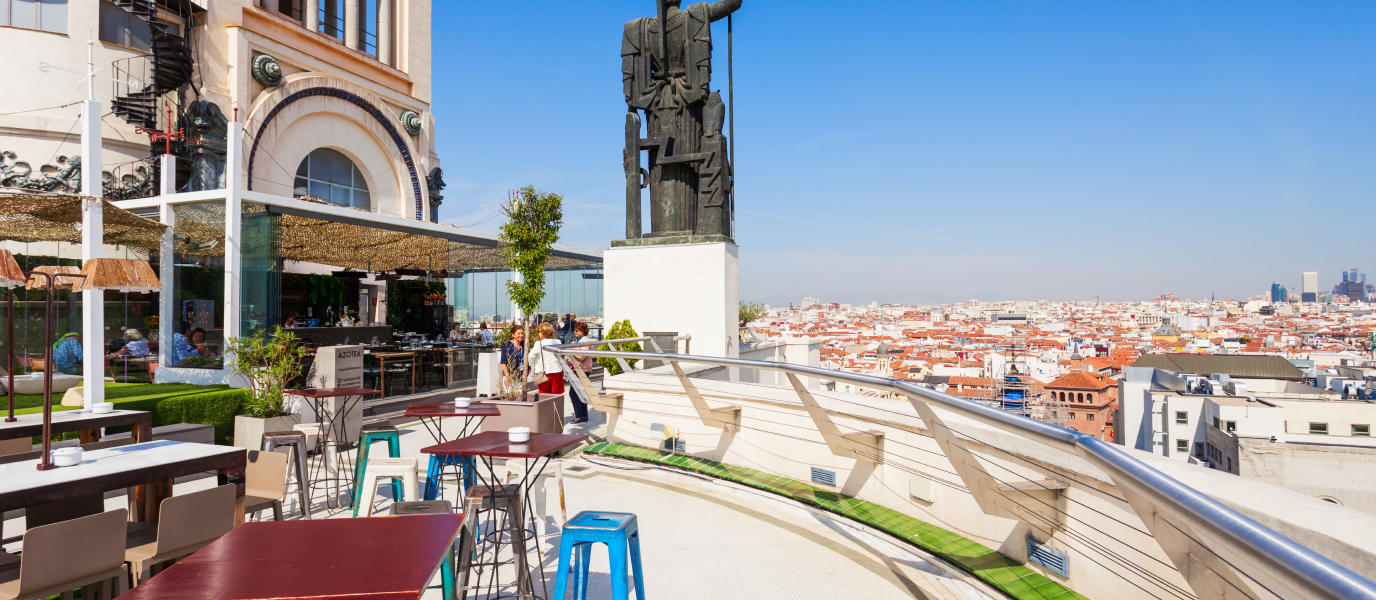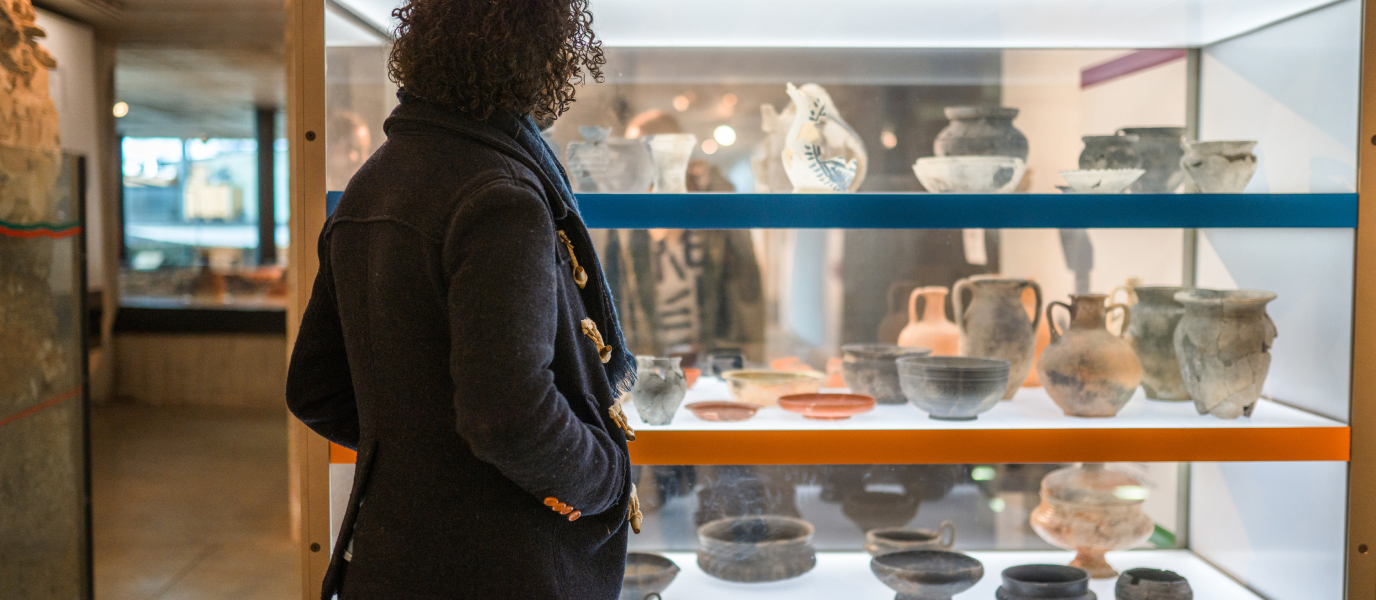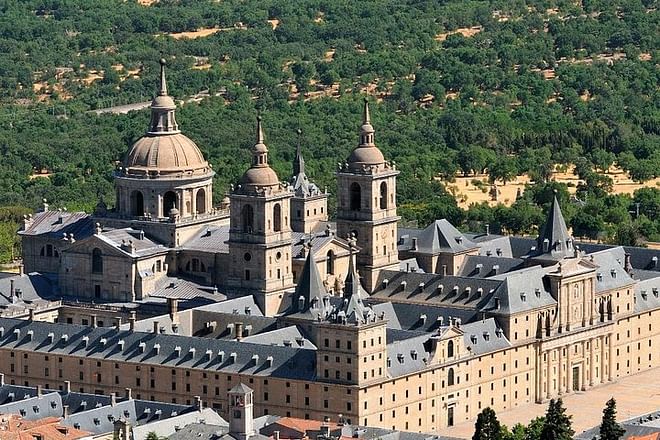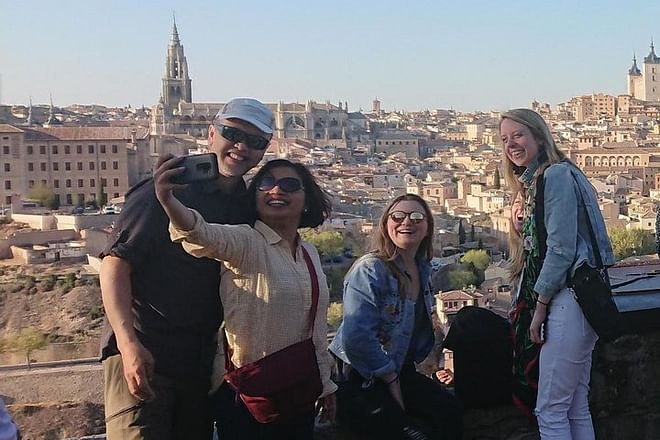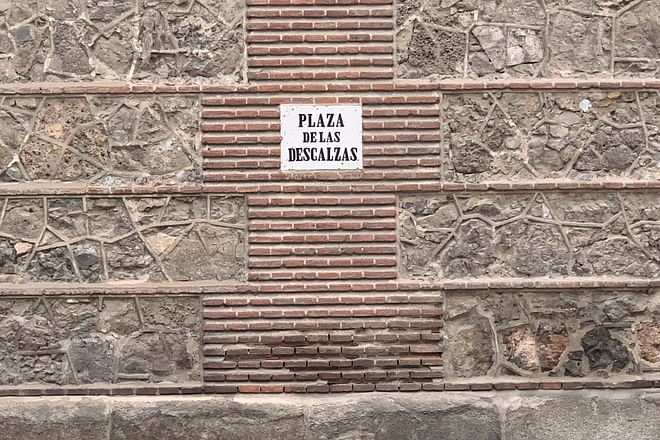The Museo Nacional Thyssen-Bornemisza is one of the three museums that make up Madrid’s ‘Golden Triangle of Art’ and the so-called Paseo del Arte. Set in a palace on the Paseo del Prado it offers visitors the opportunity to embark on a journey through European painting from the Middle Ages through to the late twentieth century. By way of over 1,000 artworks exhibited in its rooms, you can traverse an extensive historical period that begins with the original Italian masters. The chronology continues with the Renaissance and includes German Expressionism, Impressionism, Russian Constructivism and the vanguards of the twentieth century. Particularly notable is also its collection of American painting from the nineteenth century.
Embarking on a tour of works by artists from such disparate periods in time is a unique experience. Some names that shouldn’t be missing from a full tour include Dürer, Rafael, Titian, Rubens, Rembrandt, Caravaggio, Cézanne, Manet, Renoir, Gauguin, Van Gogh, Kandinsky, Picasso, Hopper and Rothko.
Wandering through the Museo Thyssen-Bornemisza
The taste of the Thyssen-Bornemisza barons for the works of ancient masters is seen, above all, in the museum’s permanent exhibition. In fact, it is one of the things that makes it most stand apart in regard to other Spanish art galleries. Trecento painting (fourteenth-century Italy) is well represented in the museum’s permanent collection. Look out for paintings such as Christ and the Samaritan Woman by Duccio di Buoninsegna, and The Annunciation Diptych by Jan Van Eyck, an exponent of the Flemish school. In the fifteenth-century portraits section, notable works include the Portrait of Giovanna degli Albizzi Tornabuoni by Ghirlandaio, and Young Knight in a Landscape by Carpaccio. You also mustn’t miss painters from the sixteenth and eighteenth centuries such as Dürer, Caravaggio, Rubens, Frans Hals and Canaletto.
Landscape and paintings of everyday scenes, common themes in the Dutch School of the seventeenth century and the American School of the nineteenth century, can be seen in several of the museum’s rooms. Such concerns also coincide with Romantic painters such as Friedrich, Impressionists such as Monet and Degas, and Post-Impressionists such as Gauguin and Van Gogh.
Vanguards of the twentieth century have a special space given the sheer number and quality of the works that form part of movements such as Fauvism, Expressionism, Surrealism, Abstract Art and Pop Art. Among the best works are Harlequin with a Mirror by Picasso, Picture with Three Spots No. 196 by Kandinsky, Dream Caused by the Flight of a Bee around a Pomegranate a Second before Waking by Dalí, and The Cock by Chagall. You can also see the famous Hotel Room by Hopper, and Woman in Bath by Roy Lichtenstein.
Exhibitions with history at the Museo Thyssen
The Museo Thyssen-Bornemisza is one of the most important private art collections of the twentieth century. Although it wasn’t initially public, since 1993 it has belonged to the Spanish State. In 2004 its collection was further expanded with over 200 works from the private collection of Carmen Thyssen-Bornemisza, which is exhibited in different forms across 16 rooms.
The origins of the collection that gave rise to the museum can be traced back to the passion of Baron Heinrich Thyssen-Bornemisza (1875-1947) for ancient art. After his death, the collection that he had started around the year 1920 was shared out among his heirs, although his son Hans Heinrich Thyssen-Bornemisza tried to recover them by buying the works from his relatives. Villa Favorita, the property purchased by his father to exhibit his collection in Lugano (Switzerland), soon became too small for the works and a new location was needed. The Spanish State offered Hans the Villahermosa Palace and, coincidentally, his wife, Carmen Cervera, happened to be Spanish. The palace’s unbeatable location, very close to the Museo del Prado, ended up convincing the Baron of its suitability.
The renovation of the old sixteenth-century palace, which was once the residence of an aristocratic family and the headquarters of a bank, was led by the renowned architect Rafael Moneo between 1990 and 1992. The task of converting the building into a modern art gallery with the right conditions (lighting, security and heating, etc.) was no mean feat. Over time, the new facilities turned out to be insufficient and two adjoining properties were acquired, increasing the original surface area by half. The garden at the front of the museum acts as a type of outdoor entrance hall or lobby, from which the original building lies to the left, and the new building with its white façade at the rear.
Tours for families with children
The museum offers families the opportunity to participate in the EducaThyssen programme, in which tours of the collection, which end with a workshop, are organised. The tours are normally divided by age—from three to six years old, and from seven to twelve years old—and allow children to familiarise themselves with the art world. Due to high demand, we recommend booking ahead, and bear in mind that parents must accompany children during the activities.
A museum to be experienced
The Museo Thyssen-Bornemisza typically defines itself as a space that invites visitors to enjoy a full experience, and there are no lack of reasons for this. At its facilities, in addition to the permanent and temporary exhibitions, there is also an auditorium that hosts interesting conferences, a shop offering design items and a restaurant.
The museum’s central location means you can continue your day of tourism at other nearby museums such as CaixaForum Madrid, the Museo Nacional del Prado and the Museo Nacional Centro de Arte Reina Sofía. From the museum, situated on the Paseo del Prado, you can also directly access Plaza de Cibeles, home to one of Madrid’s icons: the Cibeles Fountain.
























































